- Region
- Águilas
- Alhama de Murcia
- Jumilla
- Lorca
- Los Alcázares
- Mazarrón
- San Javier
-
ALL AREAS & TOWNS
- AREAS
- SOUTH WEST
- MAR MENOR
- MURCIA CITY & CENTRAL
- NORTH & NORTH WEST
- TOWNS
- Abanilla
- Abarán
- Aguilas
- Alamillo
- Alcantarilla
- Aledo
- Alhama de Murcia
- Archena
- Balsicas
- Blanca
- Bolnuevo
- Bullas
- Cañadas del Romero
- Cabo de Palos
- Calasparra
- Camping Bolnuevo
- Campo De Ricote
- Camposol
- Canada De La Lena
- Caravaca de la Cruz
- Cartagena
- Cehegin
- Ceuti
- Cieza
- Condado de Alhama
- Corvera
- Costa Cálida
- Cuevas De Almanzora
- Cuevas de Reyllo
- El Carmoli
- El Mojon
- El Molino (Puerto Lumbreras)
- El Pareton / Cantareros
- El Raso
- El Valle Golf Resort
- Fortuna
- Fuente Alamo
- Hacienda del Alamo Golf Resort
- Hacienda Riquelme Golf Resort
- Isla Plana
- Islas Menores & Mar de Cristal
- Jumilla
- La Azohia
- La Charca
- La Manga Club
- La Manga del Mar Menor
- La Pinilla
- La Puebla
- La Torre
- La Torre Golf Resort
- La Unión
- Las Palas
- Las Ramblas
- Las Ramblas Golf
- Las Torres de Cotillas
- Leiva
- Librilla
- Lo Pagan
- Lo Santiago
- Lorca
- Lorquí
- Los Alcázares
- Los Balcones
- Los Belones
- Los Canovas
- Los Nietos
- Los Perez (Tallante)
- Los Urrutias
- Los Ventorrillos
- Mar De Cristal
- Mar Menor
- Mar Menor Golf Resort
- Mazarrón
- Mazarrón Country Club
- Molina de Segura
- Moratalla
- Mula
- Murcia City
- Murcia Property
- Pareton
- Peraleja Golf Resort
- Perin
- Pilar de la Horadada
- Pinar de Campoverde
- Pinoso
- Playa Honda
- Playa Honda / Playa Paraíso
- Pliego
- Portmán
- Pozo Estrecho
- Puerto de Mazarrón
- Puerto Lumbreras
- Puntas De Calnegre
- Region of Murcia
- Ricote
- Roda Golf Resort
- Roldan
- Roldan and Lo Ferro
- San Javier
- San Pedro del Pinatar
- Santiago de la Ribera
- Sierra Espuña
- Sucina
- Tallante
- Terrazas de la Torre Golf Resort
- Torre Pacheco
- Totana
- What's On Weekly Bulletin
- Yecla


- EDITIONS:
 Spanish News Today
Spanish News Today
 Alicante Today
Alicante Today
 Andalucia Today
Andalucia Today
Israel Galván in Fla-co-men
Splintered sound and shards of sharp movement mirrored his own distortion of flamenco
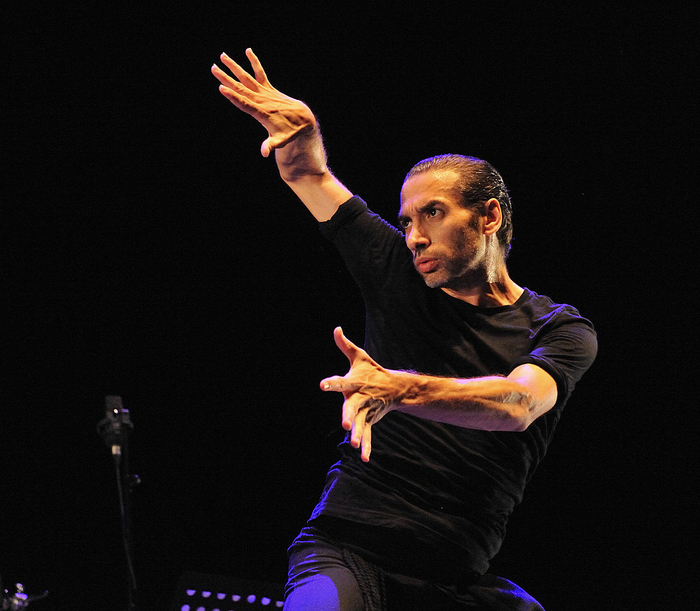
The fourth gala night of Cante de Las Minas offered two extremes of the world of flamenco: traditional vocals from Argentina to satisfy a 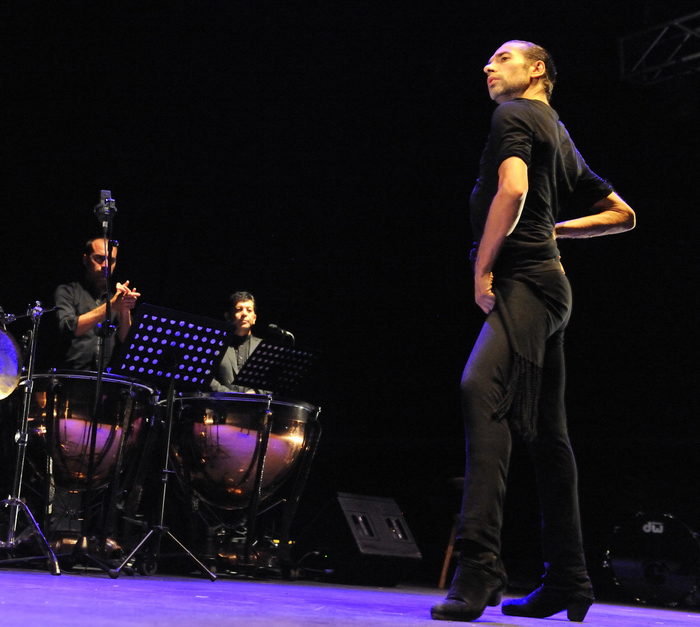 conservative audience who prefer flamenco to remain firmly rooted in the past and the groundbreaking innovation of Israel Galvàn, a man who challenges the boundaries of flamenco and fractures preconceptions with a dynamic marriage of soundscape and movement.
conservative audience who prefer flamenco to remain firmly rooted in the past and the groundbreaking innovation of Israel Galvàn, a man who challenges the boundaries of flamenco and fractures preconceptions with a dynamic marriage of soundscape and movement.
Two totally contrasting facets of flamenco, extremes which mixed on the night like oil and water.
First up was Argentina, a traditional flamenco diet of Garrotín, Serrana, Soleá, Milonga, Caña y polo, Minera de Pencho Cros, Levantica, Abandolaos, Seguiriyas, Cantiñas, Bulerías, and Fandangos de Huelva.
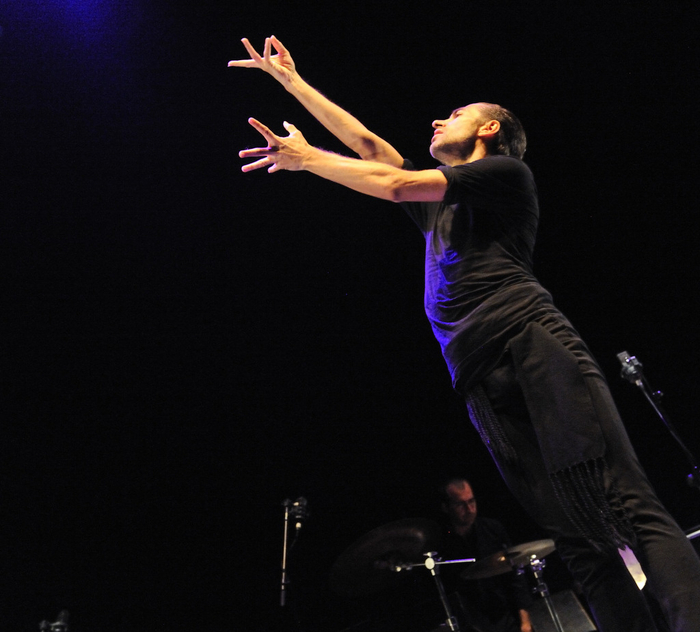 This is the first time in 4 years that the Ed has abandoned a gala or competition night at la Unión to seek a bottle of water outside, finding no light and shade or subtlety in her delivery, only monotony, ears frazzled after two hours of belting shrill high notes and a flat and soulless set which left nothing but relief when the singing finally stopped, although the flamenco purists were delighted and gave an enthusiastic standing ovation.
This is the first time in 4 years that the Ed has abandoned a gala or competition night at la Unión to seek a bottle of water outside, finding no light and shade or subtlety in her delivery, only monotony, ears frazzled after two hours of belting shrill high notes and a flat and soulless set which left nothing but relief when the singing finally stopped, although the flamenco purists were delighted and gave an enthusiastic standing ovation.
Which partly explains what happened when Israel Galván took to the stage after a short break at half past one in the morning.
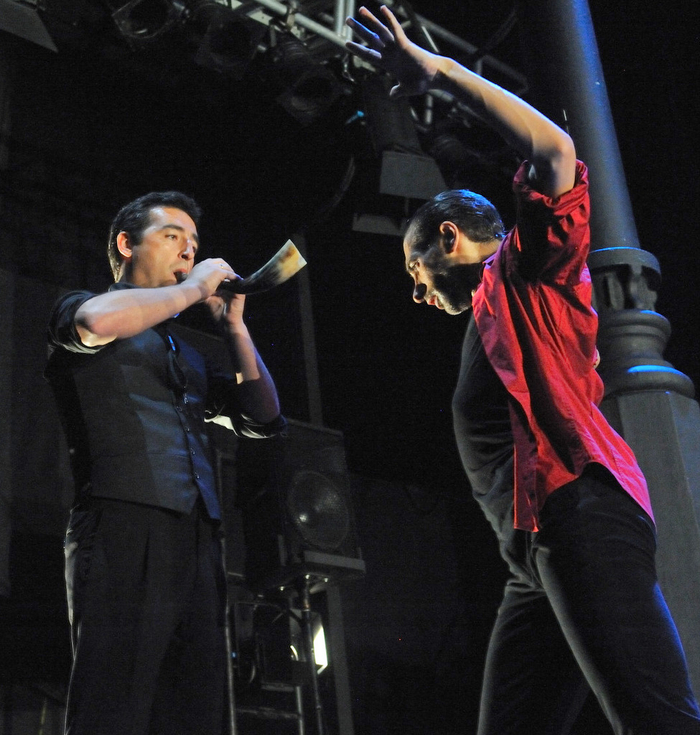 Galván presented his spectacular, Fla-co-men, various pieces under one umbrella: La Metamorfosis, Arena, El final de este estado de cosas, and Lo Real-Le Réel-The Real, his body an instrument, part of the music, his breath and emission of gasps and exclamations an instrument, playing his body with snaps and claps, tapping, rasping, soft flesh on flesh and tugging fabric, forming music with every curve and slash of his body.
Galván presented his spectacular, Fla-co-men, various pieces under one umbrella: La Metamorfosis, Arena, El final de este estado de cosas, and Lo Real-Le Réel-The Real, his body an instrument, part of the music, his breath and emission of gasps and exclamations an instrument, playing his body with snaps and claps, tapping, rasping, soft flesh on flesh and tugging fabric, forming music with every curve and slash of his body.
Splintered sound fitting shards of sharp movement to mirror his own unique distortion of flamenco, stretching it and tearing it into an entirely new form of expression which mesmerised and entertained: what we saw on that stage went way beyond a dance performance, and no matter what those who criticise this groundbreaking artist may say, this man has found a way to reassemble Spanish culture as irreversibly as Picasso when he turned the artworld on its head and fragmented sensual Spanish señoritas into analytical cubist allegories.
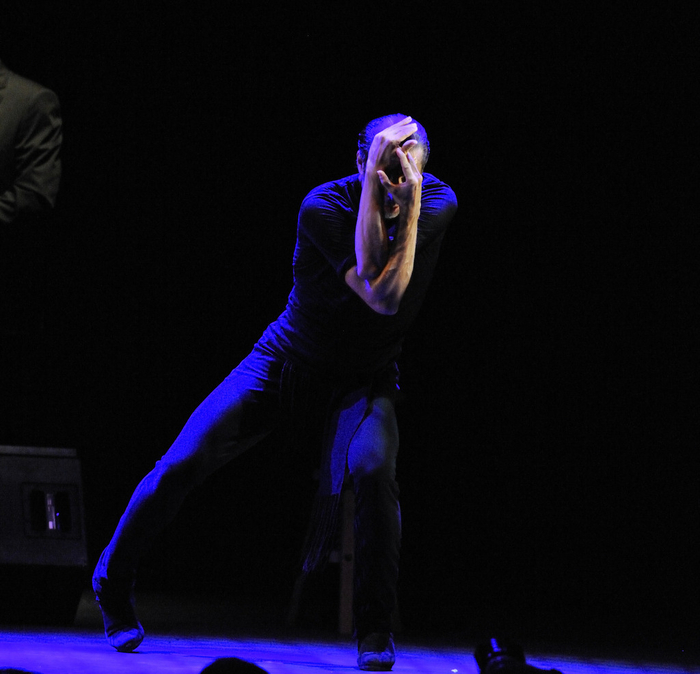 The cubists sought to revitalise tired tradition, challenge centuries old perspectives of how art should be viewed, create a way of showing a subject from many angles at the same time, reconfiguring space to distort our view of perspective and create a multidimensional image with elements reconfigured outside of the boundaries in which they were traditionally confined.
The cubists sought to revitalise tired tradition, challenge centuries old perspectives of how art should be viewed, create a way of showing a subject from many angles at the same time, reconfiguring space to distort our view of perspective and create a multidimensional image with elements reconfigured outside of the boundaries in which they were traditionally confined.
And that’s what Galván did to flamenco dance last night.
His mastery of flamenco is unquestionable, this man won the prized “Desplante” dance trophy on this very stage during the 1996 Cante de las Minas de La Unión festival, the Concurso Nacional de Arte Flamenco de Córdoba (1995), the Premio del I Concurso de Jóvenes Intérpretes en la IX Bienal de Flamenco de Sevilla (1996 Premio Nacional de Danza given by the Ministry of Culture in 2005.
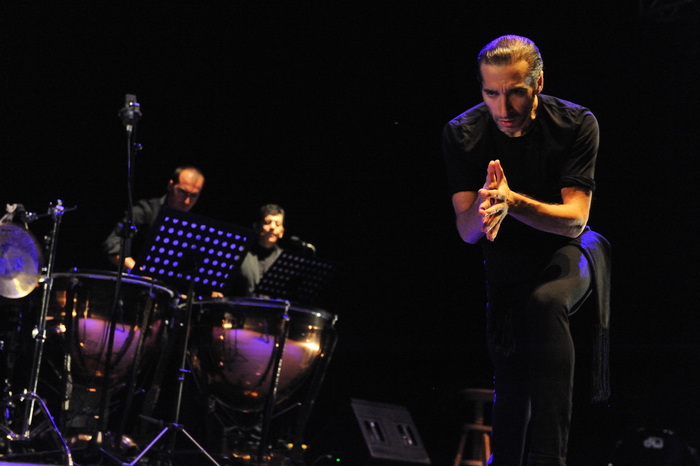 Yet it’s as though flamenco is “too easy” for him and he seeks to challenge its conventions and rigidity, by reassembling it as a whole new artform, with the same multidimensional facets as Picasso did to a flat painting with traditional perspectives.
Yet it’s as though flamenco is “too easy” for him and he seeks to challenge its conventions and rigidity, by reassembling it as a whole new artform, with the same multidimensional facets as Picasso did to a flat painting with traditional perspectives.
On Friday, Eva Yerbabuena fulfilled the expectations of traditional flamenco dance lovers with a sensual and satisfying flamenco gala, yet in the middle, three dancers, in profile, arms angled, in a mechanical pose which screamed Galván.
Picasso redefined Spanish art. Galván redefines and challenges, Spanish flamenco art.
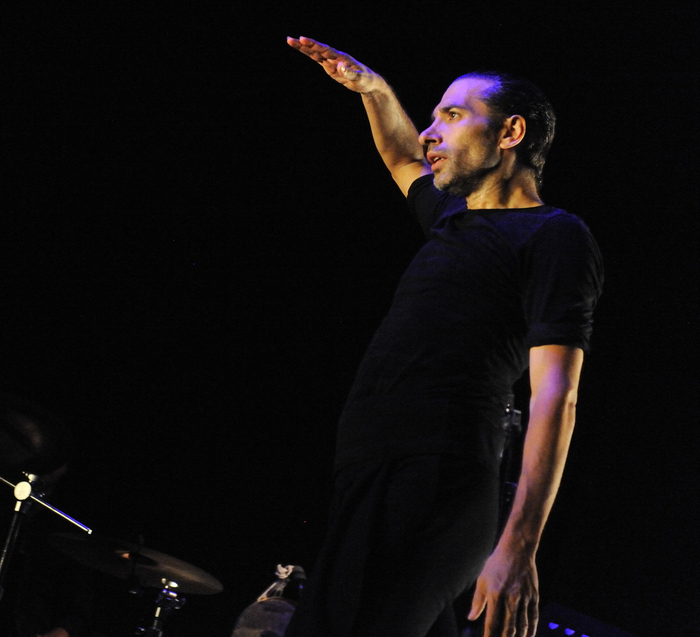 Every note of the pieces formed part of the dance, every click, crack, snap of a heel on the unyielding stage echoed with movement, as though the dancer were a living organism of the music itself.
Every note of the pieces formed part of the dance, every click, crack, snap of a heel on the unyielding stage echoed with movement, as though the dancer were a living organism of the music itself.
Supple and malleable, elastic and fluid to the liquid notes of violin and saxophone, crisp and tense, nervous and crackling, spring loaded to whip across the stage as electric guitar jarred and spat, upright and arrogant, a toreador before the bull of horn and blaring metal, coiled, authorative and mechanical to the grating voice of Tomás de Perrate.
Yet many of the “traditional flamenco “ loving public drifted out, the subtlety and mastery as uncomfortable to their sense of tradition as the monotony and traditionalism of Argentina had been to mine.
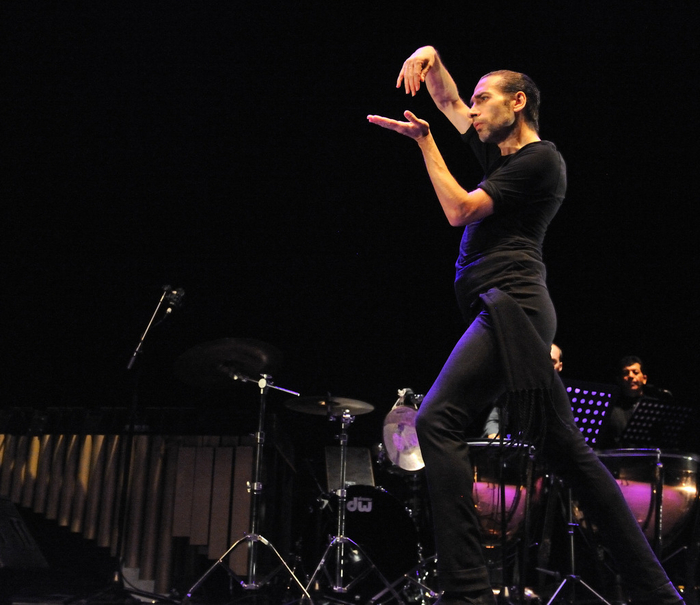 Fortunately, this master of movement performs to packed houses in the most important cultural centres of the world, receiving rave reviews in his habitual haunts of London, Sydney, New York and Madrid for his innovative and avant-garde performances.
Fortunately, this master of movement performs to packed houses in the most important cultural centres of the world, receiving rave reviews in his habitual haunts of London, Sydney, New York and Madrid for his innovative and avant-garde performances.
The Cubists challenged convention, cubism began as an idea and then it became a style.
In 50 years time, when flamencologists are analysing the evolution of flamenco in the 21st century, Argentina will just be a name on a list of artists performing at this point in time.
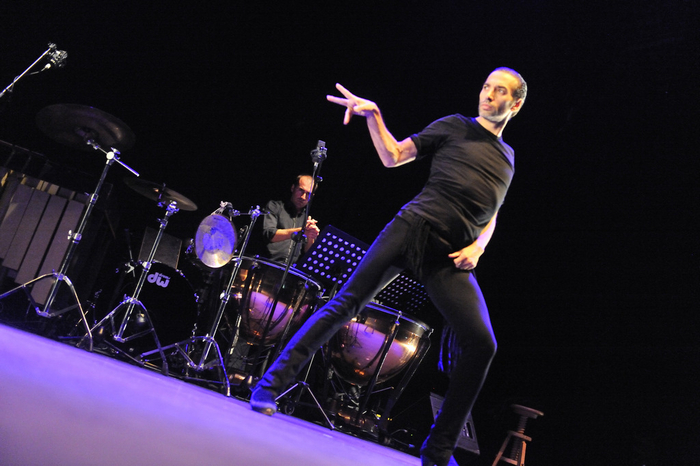 Whereas a whole chapter will be dedicated to Israel Galván and the evolution of cubist flamenco.
Whereas a whole chapter will be dedicated to Israel Galván and the evolution of cubist flamenco.
If this show lands in a theatre near you, go and see it.
Click for remaining galas in Cante de Las Minas 2013
